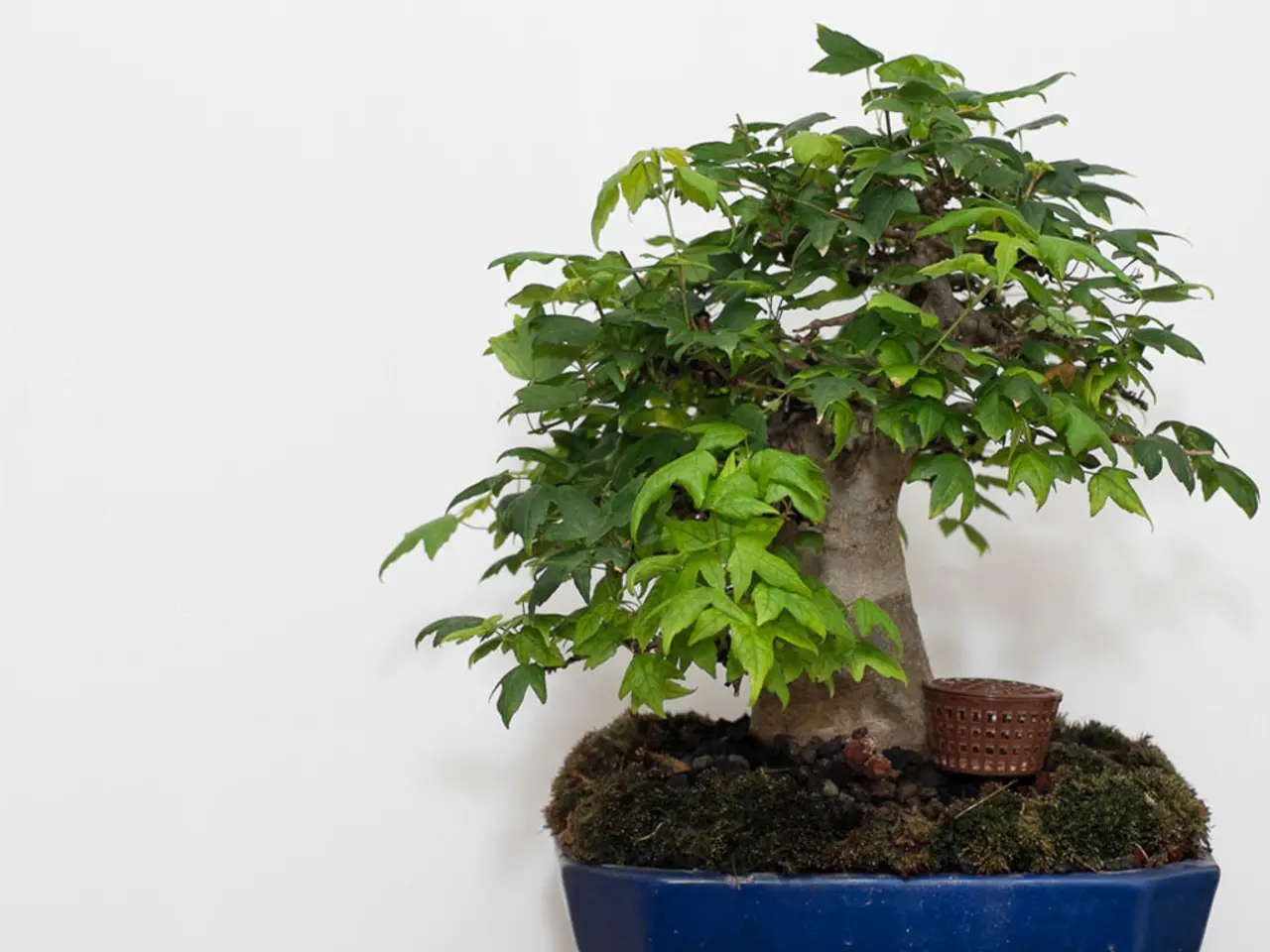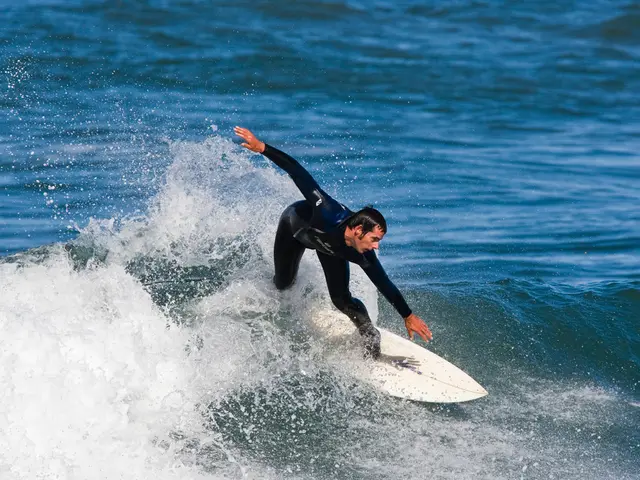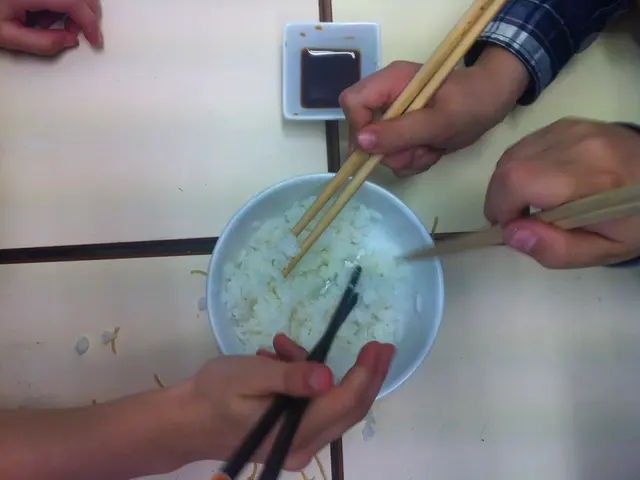"Explanation, Instructions, and Timing for Wiring a Bonsai: Guide to Bonsai Wiring"
Wiring a Bonsai Tree: A Comprehensive Guide
Wiring a bonsai tree is an essential technique for shaping and sculpting the intricate designs that mimic matured trees. Here's a step-by-step guide on how to wire a bonsai tree using anodized aluminum and copper wire.
Preparation
Before starting, ensure your bonsai tree is healthy and ready for pruning. Remove any dead leaves, branches, or twigs from the tree. Gather all necessary tools and materials, including bonsai wire, wire cutters or pliers, sharp pruning shears, root hook, stainless steel rake/spatula, protective gloves, and Bonsai soil if needed. Transfer the bonsai tree to its new permanent pot and Bonsai soil before the wiring process to avoid shock to the tree.
Best Practices for Anodized Aluminum Wire and Copper Wire
- Plan Your Wiring Design Begin by visualizing the bonsai style and the branches you want to shape. Start wiring from the trunk and move outwards to the main branches and finer twigs, progressively bending and shaping as needed. This ensures structural support and natural movement.
- Choose the Appropriate Wire Type According to Strength and Tree Sensitivity
- Anodized Aluminum Wire: Softer and easier to bend, anodized aluminum is less likely to damage bark and is suitable for beginners and delicate deciduous trees. It offers gentler support but has less holding power than copper wire, so use a thicker gauge to compensate if needed. It is also reusable and less likely to cause wire scars.
- Copper Wire: Stronger and provides a more secure hold, copper wire is preferred for more advanced shaping, especially for conifers or thicker branches. However, it requires more careful handling to avoid cutting into the bark.
- Select the Correct Wire Gauge Use a wire gauge about one-third the thickness of the branch to ensure strong but safe support. With anodized aluminum, a thicker gauge may be necessary due to its lower strength compared to copper.
- Wrap Wire Correctly Wrap the wire at a 45-degree angle around the branch, starting from the base near the trunk or previous branch junction and moving outwards. Avoid wrapping too tightly to prevent damage but secure enough to guide the branch firmly.
- Monitor and Adjust to Prevent Wire Scars Check the wire regularly to ensure it is not cutting into the bark as the branch grows. Aluminum wire tends to be gentler and less likely to cause wire marks, but care is still needed. Remove or adjust the wire in time—typically every 2-3 months—to prevent scarring, especially with copper wire.
- Bending and Shaping After wiring, gently bend the branch into the desired position. Do not force sharp bends to avoid snapping branches. Repeat the wiring and shaping process gradually over time if deeper bends are needed.
Summary Table of Anodized Aluminum vs Copper Wire for Bonsai
| Feature | Anodized Aluminum Wire | Copper Wire | |---------------------------|---------------------------------------------|--------------------------------------------| | Flexibility | Softer, easier to bend | Stronger, less flexible | | Holding Power | Lower (need thicker wire for strong shaping)| Higher (good for thicker or older branches)| | Bark Damage Risk | Lower, gentler on bark | Higher, needs careful application | | Reusability | Reusable | Generally single-use | | Ideal Use Cases | Beginners, deciduous trees, delicate shaping| Advanced shaping, conifers, sturdy branches|
Using anodized aluminum wire is ideal for beginners or delicate species due to its ease of handling and lower risk of damage. Copper wire, in contrast, gives a stronger hold for more precise or aggressive styling but requires more experience.
Unconventional Approach: Guy Wiring
Depending on the species you've wired, the branches will take about 1 to 4 months to fully set into their new position. Guy wiring is an unconventional approach to shaping bonsai trees, using 1mm bonsai wire attached to the end of branches and secured to a protruding root, soil peg, or plant pot itself to create the desired shape without risking the integrity of the branch.
By following these best practices, you can wire your bonsai safely and effectively, selecting the wire type and technique best suited to your tree and styling goals.
- While growing bonsai, adhere to a lifestyle that promotes the health of your tree species, ensuring a proper balance of food-and-drink, home-and-garden care, and relationships with other bonsai enthusiasts for shared knowledge and techniques.
- Expand your hobbies beyond gardening; consider exploring fashion-and-beauty trends to incorporate unique pots or accessories into your home-and-garden setup, elevating the overall aesthetic of your bonsai collection.
- When planning a journey, incorporate travel opportunities to visit botanical gardens or bonsai exhibitions for inspiration and new ideas on tree species and wiring techniques.
- Pets such as birds or small cats can sometimes become interested in your bonsai tree, potentially causing damage. Install barriers or secure your bonsai in protective covers to avoid any accidents.
- Upon returning from a trip, pamper yourself by indulging in some shopping sprees to purchase tools, wires, or noble-looking pots to further enhance your growing hobby and bond with your bonsai tree as you continue the journey of shaping together.
In addition to this, cars can be instrumental in transporting your bonsai trees to exhibitions, workshops, or collection trips, making it an essential part of the bonsai lifestyle.




